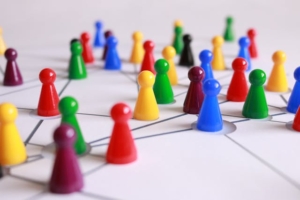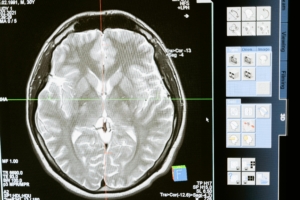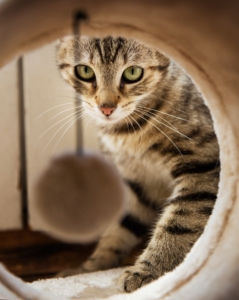The ADHD Brain and Systems – Part 2

Part 1 of The ADHD Brain and Systems addresses how the ADHD brain reacts to the systems we implement to bring order and control to our lives. It also provides three strategies you can use to make a system more effective. If you have not read part 1 yet, pause here and read it before proceeding.
Remember Carla from part 1? She and I worked together to solve her systems problem. We explored the routine she had put in place for her day. As we probed and processed, she concluded that she expected her system to do too much. She acknowledged that she had created it based on how she believed she “should” do it. She realized that her expectation of the system to take her from zero order to strict and rigid structure in one fell swoop was unrealistic and unattainable.
When you think about yourself and your past systems, does this sound familiar?
Do you want to create better systems for yourself?
Consider these Five Tips for Getting Started:
Reflect on your old discarded systems. Mine them for the g ems that were useful and effective. Consider characteristics or patterns those gems have in common. How can you incorporate those into systems you create for yourself moving forward?
ems that were useful and effective. Consider characteristics or patterns those gems have in common. How can you incorporate those into systems you create for yourself moving forward?
 Keep it simple. This phrase seems so over used, yet it is so true. I have clients who spend hours, days even, creating complex systems with bells, whistles, and baubles of all sizes and colors to account for any and every possibility. Their systems are detailed, comprehensive, complex, and attractive but not practical. Their brains enjoy the creative process of putting them together but balk at actual implementation because the systems are too overwhelming and complicated to use. So, keep it simple.
Keep it simple. This phrase seems so over used, yet it is so true. I have clients who spend hours, days even, creating complex systems with bells, whistles, and baubles of all sizes and colors to account for any and every possibility. Their systems are detailed, comprehensive, complex, and attractive but not practical. Their brains enjoy the creative process of putting them together but balk at actual implementation because the systems are too overwhelming and complicated to use. So, keep it simple.
 Use a system that works with YOUR brain. This requires some self observation, analysis, and, above all, honesty. It also requires you to let go of the idea (hope) that someone other than you knows the perfect magic way of doing things that will make everything in your life fall into place.
Use a system that works with YOUR brain. This requires some self observation, analysis, and, above all, honesty. It also requires you to let go of the idea (hope) that someone other than you knows the perfect magic way of doing things that will make everything in your life fall into place.
![]() Keep your expectations realistic. 100% consistency isn’t an achievable goal. How about putting into place a repeatable structure that you can implement 70% of the time on average and fall back to when life gets messy?
Keep your expectations realistic. 100% consistency isn’t an achievable goal. How about putting into place a repeatable structure that you can implement 70% of the time on average and fall back to when life gets messy?
 Get a thinking partner. It’s hard to ask yourself the hard questions and be objective about your responses when just doing it in your head. A coach is specially trained to collaborate with you to help you move forward. If setting up with a coach doesn’t feel like the right move for you, a trusted friend or family member may be able to fill the role. Who is a person in your life who can listen, ask good questions, and collaborate with you to process your wants, needs, patterns, skills, and so forth?
Get a thinking partner. It’s hard to ask yourself the hard questions and be objective about your responses when just doing it in your head. A coach is specially trained to collaborate with you to help you move forward. If setting up with a coach doesn’t feel like the right move for you, a trusted friend or family member may be able to fill the role. Who is a person in your life who can listen, ask good questions, and collaborate with you to process your wants, needs, patterns, skills, and so forth?
What’s your next move?

 Carla arrived at coaching so frustrated with herself. She had determined a routine for her day in the previous session, but reported that she had “failed” at sticking with it. When I asked what she thought was getting in her way, she said, “It wasn’t a good plan. It doesn’t work. I just want a system that works.”
Carla arrived at coaching so frustrated with herself. She had determined a routine for her day in the previous session, but reported that she had “failed” at sticking with it. When I asked what she thought was getting in her way, she said, “It wasn’t a good plan. It doesn’t work. I just want a system that works.”
 he ADHD brain wants its dopamine hit. It begins looking elsewhere for stimulation and comfort. This doesn’t mean the system has failed, was no good in the first place, or needs to be thrown out. IT ALSO DOESN’T MEAN THAT YOU HAVE FAILED. Before scrapping your system, pause and take the opportunity to get creative and re-sparkle-ize your system. Make it flashy again to get your brain back on board.
he ADHD brain wants its dopamine hit. It begins looking elsewhere for stimulation and comfort. This doesn’t mean the system has failed, was no good in the first place, or needs to be thrown out. IT ALSO DOESN’T MEAN THAT YOU HAVE FAILED. Before scrapping your system, pause and take the opportunity to get creative and re-sparkle-ize your system. Make it flashy again to get your brain back on board. My grandmother frequently admonished me throughout my early years by saying, “Curiosity killed the cat.” This reprimand usually coincided with actual or contemplated mischief, so I heard it a lot from my grandmother’s lips. She used the quip to keep me in line.
My grandmother frequently admonished me throughout my early years by saying, “Curiosity killed the cat.” This reprimand usually coincided with actual or contemplated mischief, so I heard it a lot from my grandmother’s lips. She used the quip to keep me in line. 
 elements, illness, starvation, or predator. Your brain truly believes that curiosity killed the cat and that curiosity will kill you, as well. Thus, it creates a feeling of fear in order to discourage curiosity and regain a sense of safety.
elements, illness, starvation, or predator. Your brain truly believes that curiosity killed the cat and that curiosity will kill you, as well. Thus, it creates a feeling of fear in order to discourage curiosity and regain a sense of safety.
